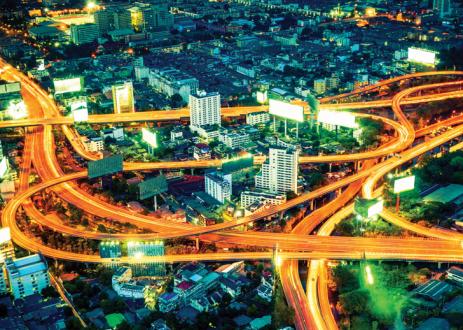GHG Mitigation in Japan
An Overview of the Current Policy Landscape

概要
2013年,在福岛Daiichi核电站灾难之后,日本政府提出了一个修订的目标,以将温室气体(GHG)排放量减少3.8%,从2005年到2020年。
This paper analyzes this target and finds that Japan can likely meet it by continuing electricity-saving efforts and ensuring implementation of existing mitigation policies. An overview of these policies and a comparison of the target to Japan’s earlier 2020 mitigation targets are also presented. The paper concludes with considerations for improving Japan’s current target, as well as future target-setting processes.
执行摘要
自2011年3月的福岛核灾难以来,日本开始对其能源政策进行重大修改。尽管该政策仍在制定,但尚不完全清楚什么将取代日本国家能源计划中的核能,但它已经摆脱了计划的核电规模。What is clear, however, is that Japan’s ability to meet its greenhouse gas (GHG) emissions mitigation target under the United Nations Framework Convention on Climate Change (UNFCCC) will depend in large part on the energy path it pursues in the wake of the Fukushima disaster.
2013年11月,日本在华沙举行的第19次大会(COP19)会议(COP19)上宣布,2005年水平比2005年的2020年修订了2020 GHG排放目标。这个“华沙目标”取代了2009年在哥本哈根COP15的1990年降低25%的降低。华沙目标仍然是暂定的,将在对能源政策和能源组合的进一步审查后进行修订,这很可能会在一年内进行。政府最近宣布了一项新的基本能源计划,该计划清楚地要求重新开始核电站。这是否证明在政治上是可行的,如果是的,则可以看出什么规模。
该工作文件调查日本的缓解政策格局,并着手回答三个问题:
How does the ambition level of Japan’s Warsaw Target compare with its Copenhagen Pledge and earlier 2020 mitigation targets?
日本最近的政策发展如何帮助其减少排放量?
日本能否在其现有政策格局中实现其华沙目标?
Even when factoring out GHG emissions avoidance by nuclear power, the ambition level of Japan’s Warsaw Target has taken a step back from the Copenhagen Pledge.
Japan’s Copenhagen Pledge relied on the expansion of nuclear power to help curb emissions. When the GHG emissions avoidance expected through nuclear power is factored out, Japan’s domestic mitigation efforts under the Warsaw Target are only marginally more ambitious than the target that preceded the Copenhagen Pledge (so-called Mid-Term Target of 2009, pledging -9 percent domestically by 2020 from 1990 levels). The Warsaw Target arguably takes a step backward from the Copenhagen Pledge by lowering the ambition level similar to the pre-Copenhagen Mid-Term Target and factoring out the CO2 emissions avoidance that would have been achieved by nuclear power. Moreover, the Japanese government has not yet explained how its Warsaw Target is consistent with a planned 80 percent reduction by 2050 from 1990 levels stipulated in the fourth Basic Environment Plan, a long-term comprehensive national plan for environmental conservation.
日本不断发展的政策格局包括针对特定部门的缓解措施,但缺乏有关预期排放的信息,因此很难量化其影响。
In the aftermath of the Fukushima disaster, Japan has implemented several policy measures that help position it to meet its mitigation targets, including a full-fledged feed-in tariff scheme for renewable electricity, a global-warming tax, and a number of measures to improve the thermal insulation level of households. These policies apply to sectors (renewable energy, residential, and commercial) where few aggressive policy measures were taken before the Fukushima disaster. However, the Japanese government has not reported the expected CO2 emissions reductions for most policy measures. This omission is at least partially attributable to the lack of a policy implementation plan to achieve the 2020 target.
The Japanese government is more explicit about promoting high-efficiency coal-fired power plants both domestically and overseas. While these plants are perhaps less CO2-intensive than those currently operating, they are still highly CO2-intensive compared to other fossil-fired power generation technologies in absolute terms. As with the Warsaw Target, the government has not clearly explained how its promotion of high-efficiency coal-fired power plants is consistent with its 2050 mitigation goal and the global 2°C target.
如果继续在福岛核灾难之后发起的加强电力努力,日本可以实现其华沙目标。
Another objective was to assess the achievability of the Warsaw Target by comparing it with three emissions projections under continued mitigation efforts available in the literature. Limited availability of information on how the target was developed made it impossible to draw definite conclusions. Nonetheless, the results indicate that the continuation of enhanced electricity-saving efforts begun after the Fukushima nuclear disaster is crucial to achieving the Warsaw Target. When such enhanced electricity-saving efforts are combined with the continuation of other mitigation efforts and the modest economic growth rates estimated by the International Monetary Fund (IMF) and the International Energy Agency (IEA), Japan will likely achieve the Warsaw Target.
Projects
-

开放气候网必威官网是真的吗络(不活动)
Visit Project将全球关键国家的独立研究机构和民间社会团体汇集在一起,以监控国家对气候变化政策的进展。必威官网是真的吗
Part of 必威官网是真的吗

